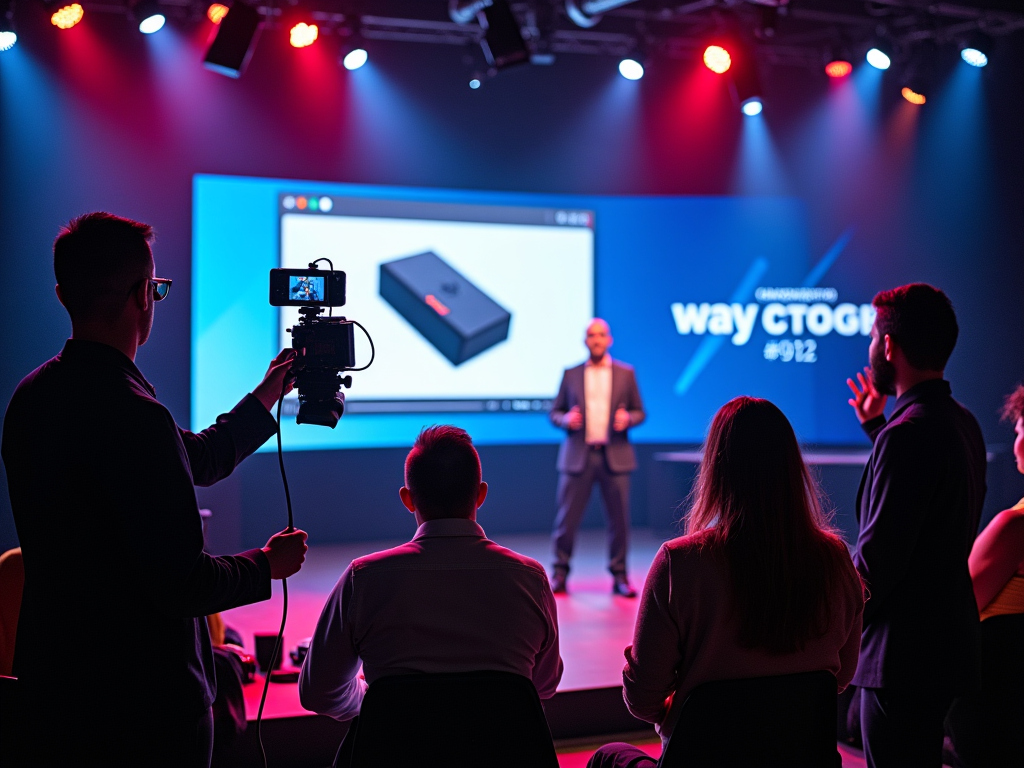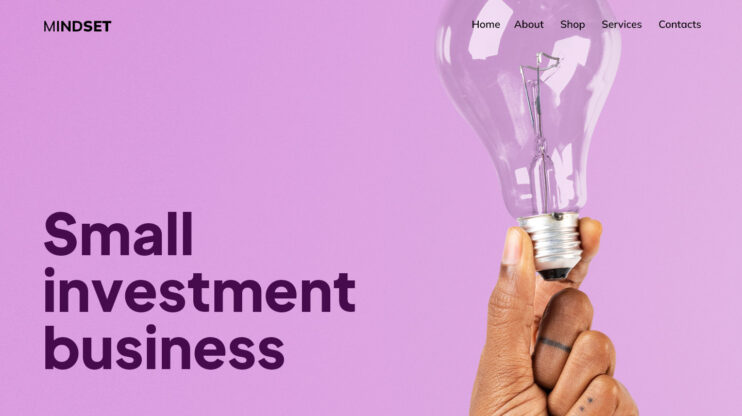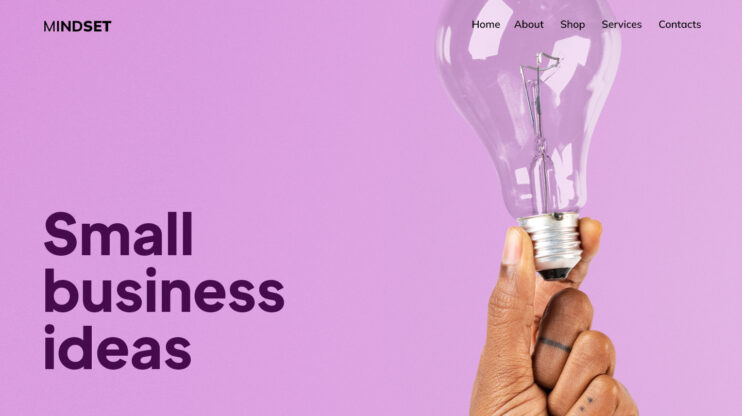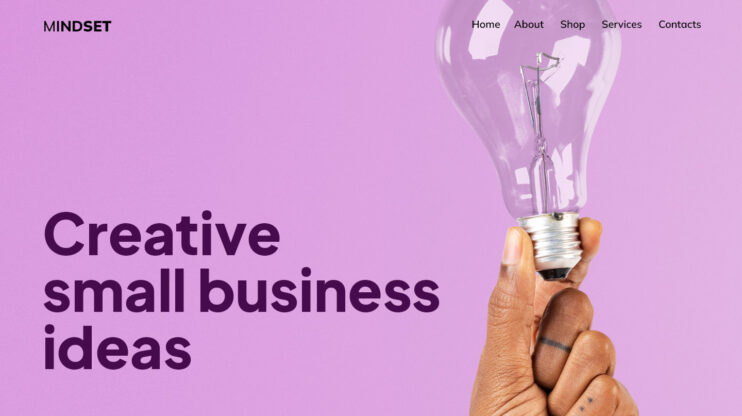Introducing a new product is an exciting but demanding endeavor that can greatly influence your business’s success. Whether you’re introducing an innovative product or adding a new feature to an existing lineup, well-executed product launch ideas can generate buzz, attract customers, and increase sales.
With the right strategies, you can effectively capture your target audience’s attention and drive long-term success. In this article, we’ll explore 20 creative product launch ideas to help you maximize your launch impact and skyrocket your business growth.
FAQ
How do you launch a product creatively?
What are the 7 steps of product launch?
- Market research: Understand your target audience and competitors.
- Define goals: Set clear objectives for the launch (e.g., sales, awareness).
- Positioning & messaging: Craft a value proposition and key messages.
- Create a launch plan: Develop a timeline with marketing, sales, and distribution strategies.
- Prepare marketing materials: Design ads, social media content, landing pages, etc.
- Pre-launch activities: Generate excitement with teasers, email campaigns, or pre-orders.
- Launch & monitor: Roll out the product, track performance, and adjust as needed.
How do I do a product launch?
What is an example of a product launch message?

Create your online store in minutes!
Looking to sell online? Develop and launch your store with 10Web AI Ecommerce Website Builder.
Understanding product launch strategies
A good product launch strategy helps new products succeed in the market. It involves planning, research, and smart tactics to get customers interested. Let’s look at why launches matter and how to spot market trends.
The importance of a successful launch
A strong product launch can make or break a new item. It sets the tone for future sales and brand image. Good launches grab attention and create buzz. They help products stand out in crowded markets.
Successful launches also:
- Build excitement among customers
- Get media coverage
- Boost early sales numbers
Poor launches often lead to slow sales and wasted money. They can damage a brand’s reputation too. That’s why careful planning is key.
Companies should set clear goals for their launch. This helps track success. Goals might include sales targets or social media mentions. Having a solid plan increases the odds of meeting these goals.
Analyzing market trends
Knowing what customers want helps shape launch plans. Market research shows current trends and buyer needs. This info guides product design and marketing.
Some ways to spot trends:
- Survey target customers
- Watch competitor moves
- Check industry reports
- Follow social media chatter
Trends change fast. What’s hot today may not be tomorrow. Keeping an eye on shifts helps companies stay ahead.
Data from past launches can inform new ones. Looking at what worked before saves time and money. It also helps avoid past mistakes.

Create your online store in minutes!
Looking to sell online? Develop and launch your store with 10Web AI Ecommerce Website Builder.
Building a complete launch plan
A good launch plan sets clear goals and focuses on the right people. It helps make sure your new product starts strong and reaches those who will want it most.

Create your online store in minutes!
Looking to sell online? Develop and launch your store with 10Web AI Ecommerce Website Builder.
Setting clear objectives
What do you want your launch to do? Maybe you hope to sell a certain number of items or get people talking about your product. Write down exactly what you want to achieve. This helps guide your planning.
Make your goals specific and easy to measure. For example, Sell 1,000 units in the first month is better than Increase sales. Set a time frame for each goal.
Think about both short-term and long-term aims. Short-term goals might focus on the first few weeks after launch. Long-term goals could look at where you want to be in 6 months or a year.
Identifying target audience
Who will buy your product? Knowing your ideal customer helps you plan better. Look at things like age, gender, income, and interests.
Research where these people spend time online and offline. This tells you where to focus your marketing efforts. Do they use social media a lot? Which platforms? Do they read certain magazines or go to specific events?
Create detailed profiles of your target customers. Include their needs, wants, and pain points. This helps you craft messages that speak directly to them.
Consider doing surveys or focus groups with people who fit your target audience. Their feedback can give you valuable insights for your launch plan.
20 product launch ideas
A great product launch is all about creating buzz and getting your audience excited. Here are 20 creative product launch ideas to make your launch stand out and capture attention.
1. Livestream product launch
A livestream product launch lets companies show off new items to many people at once. Brands can use sites like YouTube or Twitch to reach fans. This type of launch works well for tech products, games, and other digital goods.
During a livestream, a host can talk about the product’s features and answer questions from viewers. Companies may bring in special guests or experts to add more value. Some brands offer deals or contests for people who watch the stream live.

Livestreams can create buzz and get people excited about a new product. They’re cheaper than big in-person events and can reach a global audience. Viewers feel like they’re part of something special by watching in real-time.
To make a livestream launch work, brands need good internet, clear audio, and nice lighting. It’s smart to practice beforehand and have a backup plan in case of tech issues.
2. Host an influencer event
Invite popular social media influencers to an exclusive gathering to introduce your new product. Pick a cool venue that matches your brand’s style. Set up fun photo spots with your product for influencers to take pictures.
Give guests a chance to try out the product hands-on. This lets them share real experiences with their followers. Offer tasty snacks and drinks that fit your brand’s theme.
Create special gift bags with product samples and branded items. This gives influencers more content to post about later. Plan some fun activities or games related to your product to keep everyone engaged.
Make sure there’s good lighting and Wi-Fi so influencers can easily post during the event. Consider having a professional photographer capture high-quality images for attendees to share.
3. Interactive demo launch
A demo launch lets people try a new product firsthand. This hands-on approach builds excitement and shows how the product works. Companies can set up demo stations at an event space or store. Guests get to test features and ask questions.
Online demos work well too. A company can host a live stream where they show off the product. Viewers can interact through chat. Some businesses offer virtual reality demos for an immersive experience.
Demo launches work for many types of products. Tech gadgets, video games, and cars are common choices. But even food and drinks can have interactive demos. Cooking shows or tastings give people a chance to sample new flavors.
The key is to make the demo fun and easy to understand. Clear instructions help guests get the most out of their time. Friendly staff should be ready to answer questions and offer help.
4. Giveaway campaign
A giveaway campaign can create buzz for your new product launch. Pick a prize that matches your brand and target audience. This could be your new product or a related item. Set clear rules for entry, like following your social media or sharing a post.
Make it easy to join. Use a simple entry form or a hashtag on social media. Spread the word about your giveaway on all your channels. Email your list, post on social media, and tell your website visitors.
Set a time limit to create urgency. A week or two is often enough. Share updates during the campaign to keep people excited. When it ends, announce the winner publicly and thank everyone who took part.
A giveaway can help you reach new people and get them talking about your product. It’s a fun way to engage your audience and start your launch with a bang.
5. Exclusive launch event
An exclusive launch event can build excitement for a new product. Invite a select group of people to a special gathering. This could include loyal customers, industry experts, and media representatives.

Choose a unique venue that fits your product’s image. Decorate the space to match your brand’s style. Create a VIP atmosphere to make guests feel special.
Plan activities that let attendees try out the product firsthand. Set up demo stations or interactive displays. This hands-on experience can help people connect with your offering.
Provide tasty food and drinks that go with your product theme. Think about adding entertainment like music or performances. These extras can make the event more fun and memorable.
Give guests special perks or gifts to thank them for coming. This could be a limited edition version of your product or branded items. These touches can leave a lasting good impression.
6. VR product experience
Virtual reality can make product launches exciting. Companies use VR to show off new items in fun ways. Attendees put on special goggles to see 3D versions of products.
VR lets people try out products before they buy them. They can walk around virtual cars or test out new gadgets. This hands-on approach helps customers understand how things work.
Some brands create whole virtual worlds for their launches. People can explore and interact with products in these digital spaces. It’s like stepping into a video game version of the new item.
VR product demos work well for tech gadgets, cars, and home goods. They give a clearer picture than just looking at photos or videos. Customers get a feel for size, features, and how to use things.
7. Early access webinars
Early access webinars give customers a sneak peek at new products before they launch. These online events let people see the product in action and ask questions. Here are some event website examples you can use as inspiration when creating the webinars’ website.
Companies can invite a select group of customers or fans to join the webinar. This creates a feeling of exclusivity and builds excitement.
During the webinar, product experts can show off key features and benefits. They can also explain how the product solves common problems.
Attendees often get special perks like discounts or bonus content. This rewards them for their interest and encourages pre-orders.
Early access webinars help gather feedback too. Companies can use this input to make final tweaks before the full launch.
These events work well for tech products, software, and online courses. They give customers a clear picture of what to expect.

Create your online store in minutes!
Looking to sell online? Develop and launch your store with 10Web AI Ecommerce Website Builder.
8. Pop-up shop launch
A pop-up shop can create buzz for a new product launch. These temporary stores give customers a chance to try products in person. They also build excitement through their limited-time nature.
Pop-ups work well in high-traffic areas like malls or busy streets. Some brands use mobile pop-ups in trucks or vans to reach more places. This lets them go where their target customers are.
Inside the pop-up, focus on showcasing the new product. Keep the space simple and uncluttered. Too much stuff can overwhelm shoppers. Instead, create an inviting place where people want to spend time.
Offer special experiences to draw people in. Free samples or demos let customers try before they buy. Some pop-ups provide styling help or makeup applications. These extras add value and encourage purchases.
Limited-edition items or deals just for pop-up visitors can boost sales. The fear of missing out motivates people to buy now rather than later.
9. Countdown teasers
Countdown teasers are a fun way to build excitement for a product launch. They involve sharing daily posts that show how many days are left until the big reveal. Each post typically includes a graphic with the number of days remaining.
This approach serves two purposes. First, it reminds people about the upcoming launch. Second, it creates a sense of anticipation as the numbers get smaller.
Creating countdown teasers is simple. Make a series of images that look similar, changing only the number each day. Post these on social media platforms to keep your audience engaged.
You can also add small hints or clues about the product in each teaser. This sparks curiosity and gets people talking about what might be coming. Just be careful not to give away too much too soon.
10. Customer reward program
A reward program can increase sales when launching a new product. Customers earn points for purchases or actions like sharing on social media. These points can be redeemed for discounts, free items, or special perks.
Some brands offer tiers in their programs. As customers gain more points, they move up levels. Higher tiers often come with better rewards. This setup keeps people engaged and eager to reach the next level.
Many companies now use apps for their reward programs. This makes it easy for customers to track points and redeem rewards. Apps also let brands send push notifications about new offers or products.
Some reward programs team up with other businesses. This gives customers more ways to earn and use points. It can make a program more appealing and useful for members.
11. Augmented reality launch
Augmented reality (AR) can make product launches more engaging and interactive. AR lets people see virtual versions of products in the real world through their phones or special glasses.
One cool AR launch idea is to create a virtual showroom. Customers can walk around and check out 3D models of new products from all angles. They can even see how items look in their own homes.
Another option is to hold an AR scavenger hunt. People use their phones to find virtual clues and product info hidden in the real world. This gets them excited about the launch in a fun way.
Some companies do AR product demos during live events. They project holograms on stage to show off new features. This wows the audience and helps explain how things work.
12. Pre-sales
Pre-sales lets customers buy products before they launch. This builds excitement and helps gauge interest. Companies can offer special deals to early buyers. They might give discounts or extra features.
Pre-sales also create a sense of exclusivity. Customers feel special getting the product first. This can lead to positive word-of-mouth marketing.
To run pre-sales, set up a landing page for your product launch. Show product info and benefits. Add a countdown timer to create urgency. Use email lists to reach interested customers.
Social media can spread the word about pre-sales. Share teasers and behind-the-scenes content. This builds anticipation for the launch.
Pre-sales data helps with inventory planning. It shows how many units to make. This reduces the risk of overproduction or shortages.
13. Referral programs
Referral programs can boost product launches. They tap into word-of-mouth marketing. Customers tell friends about your new product. In return, they get rewards.
Many companies use discounts as rewards. Both the referrer and new customer might get 10% off. This encourages sharing and buying.
Some brands offer free products instead. This works well for subscription services. Refer a friend and get a free month.
Cash rewards are another option. PayPal gave $10 for each new user sign-up. This helped them grow fast.
Contest-style programs add excitement. Customers enter a draw for each referral. Prizes could be your new product or something valuable.
Referral programs work best when simple. Make it easy for customers to share. Use clear rewards that people want. This can lead to more sales at launch.
14. Behind-the-scenes sneak previews
Giving fans a glimpse behind the curtain can build excitement for a product launch. Companies can share photos or videos of the product being made. This lets people see how things come together.

Short clips of employees working on the product add a human touch. Brands might post these teasers on social media in the weeks before launch. It creates buzz and makes people curious to learn more.
Some businesses send email updates with insider info to their mailing list. These can include stories about product development or early testing. Sharing challenges faced and how they were solved shows the care put into the product.
Livestreams of final preparations right before launch day can also draw interest. People love feeling like they have special access to something new and exciting.

Create your online store in minutes!
Looking to sell online? Develop and launch your store with 10Web AI Ecommerce Website Builder.
15. Collaboration with brands
Working with other companies can promote a product launch. Big names like Nike and Apple often team up. They made a special Apple Watch for runners. This mix of tech and sports gear got people excited.
Brands don’t have to be alike to work together. Sometimes unexpected pairs create buzz. Adidas and Allbirds joined forces to make eco-friendly shoes. This surprised many but showed both brands care about the planet.
Teaming up can help reach new customers. When two brands combine, they share fans. This means more people hear about the new product. It’s a smart way to grow without spending lots of money on ads.
Brand team-ups can lead to fun, fresh ideas. They mix different styles and skills. This often results in products people haven’t seen before. It’s a great way to stand out in a crowded market.
16. Press release
A press release is a key part of launching a new product. It tells people about your new item in a clear way. A good press release has a catchy headline that grabs attention. The first paragraph should sum up the main points.
Include key details like what the product does and why it’s special. Talk about how it helps customers. Give some specs if needed. Add a quote from someone at your company to make it more personal.
Make sure to put the date and where your company is based. End with contact info so people can reach you. Keep the whole thing short – about one page is enough. Write in a plain style that’s easy to read.
17. Teaser campaign
A teaser campaign builds excitement before a product launch. It gives sneak peeks to spark curiosity. Brands often use social media for this strategy.
Teasers can be short videos, images, or cryptic messages. They hint at what’s coming without giving everything away. The goal is to make people want to learn more.
Apple is known for its teaser campaigns. Before new iPhone releases, they send out mysterious invitations to media events. This gets people talking and guessing about the new features.
Movie studios also use teasers well. They release short clips or posters months before a film comes out. This helps create buzz and gets fans excited to see the full movie.
To run a good teaser campaign, start small and slowly reveal more over time. Use a consistent theme or hashtag across all teasers. This helps people connect the dots and follow along.
18. Sneak peek email marketing campaign
A sneak peek email campaign builds excitement for a new product launch. It gives customers a glimpse of what’s coming soon. These emails often include teaser images or short video clips.
Many brands use sneak peeks to create buzz before a big release. They might show parts of a product or hint at new features. This gets people talking and sharing on social media.
Sneak peek emails can also offer special perks to subscribers. Early access or exclusive discounts are common. This makes customers feel valued and eager to buy.
Timing is key for these campaigns. Brands usually send them a few weeks before launch. This gives people time to get excited but not so long that they lose interest.
19. Host a launch party
A launch party can build excitement for a new product. It brings people together to celebrate and learn about the offering. Companies can set up fun activities to let guests try the product firsthand.
Food and drinks add to the festive mood. Themed decorations that match the product create a cool atmosphere. Live music or a DJ keeps the energy up all night long.
Interactive stations give people a chance to test things out. Photo booths with props let guests take fun pictures to share online. Goodie bags with samples are a nice touch for attendees to take home.
Inviting media and influencers can help spread the word. A short presentation explains key features. But most of the night is for mingling and enjoying the party vibe.
20. Product launch podcast series
A podcast series can build excitement for a new product launch idea. Companies can release episodes leading up to the big day. These shows can share behind-the-scenes info about the product’s development. They might also feature interviews with team members or industry experts.

Podcasts let brands connect with listeners in a personal way. People can tune in while commuting or doing chores. This gives more chances to reach potential customers. The audio format allows for storytelling and in-depth discussions.
Some brands create a limited series just for the launch. Others may start an ongoing show about their industry. Either way, podcasts help create buzz and keep people interested. They’re a creative way to spread the word about a new product.
Conclusion
A successful product launch idea goes beyond simply introducing a new product; it’s about creating an experience that grabs attention and leaves a lasting impression. By using the 20 ideas in this article, you can build a launch strategy that excites your audience, increases brand awareness, and drives sales. Whether it’s hosting a live event, collaborating with influencers, or offering exclusive deals, the key is to be creative, strategic, and customer-focused. With the right approach, your product launch idea can set the stage for long-term business success.












